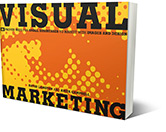Most of the people who arrive on your home page are armed with these predictable questions: Your answers to those questions should shape your homepage design approach.

Does your Homepage answer these questions?
What is this site?
What’s in it for me?
Who are you?
Should I stay or go?
Most of the people who arrive on your homepage are armed with these predictable questions: Your answers to those questions should shape your homepage design approach.
What shouldn't shape your homepage design approach is the idea that your homepage should seduce visitors with a ton of cool images. The most important thing your site should do is to inform visitors about what you actually do, and for whom.
It’s important to reiterate the eternal truth of the homepage: it is not always the first page. The number of visitors to your site who will first arrive via a sub-page is in direct proportion to the amount of content your site contains. The more pages you have, the more first pages you have. However, most people who arrive on a sub-page will probably head to your homepage next, armed with the same questions about your website.
Plan your homepage as a text outline first.
Your outline should organize your priorities for your homepage, starting with what you think is the most important information a prospect should know and ending with things that are important enough to be on the homepage, but not as essential. This should make for a pretty short list. If you're still not sure about your list, try this one:
- What You Do for Your Clients
- What You've Done
- What Your Clients Say
- Who You Are
1. What You Do for Your clients?
What do you do? Who do you do it for? Your positioning statement is a succinct answer to those questions. Think of this as if you are stepping into an elevator with a prospect who turns to you and asks "So, what do you do?" You answer clearly and succinctly, knowing you have about 15 seconds to make it count. And remember to answer, “What’s in it for me?” What do you do that is unique, special and meaningful from the point-of-view of your client or prospect?
2. What You’ve Done
This is your experience. This is where you show your best work. The stuff that serves as the best example of what you just said you do. This is the stuff that would inspire and excite your ideal prospect. On your homepage, you should show a beautiful image and a brief explanation of the engagement with a clear link to a case study. A case study is not just a page of images. Inspire them with that first image, then focus more on the “tell” and less on the “show.“
3. What Your Clients Say
Ideally, your case studies already include client testimonials. But it makes a lot of sense to take the best ones and emphasize them on your homepage. Think of a testimonial like a real, person-to-person referral. Some of your prospects will look at your "what we do" stuff on your homepage, but might not bite on the cases study links. The testimonials are for them. You are giving your prospects a chance to meet their peers and hear what they have to say about working with you. And you reap the benefit of their praise (not to mention the implicit confidence you exude by letting your clients speak for you).
4. Who You Are
Finally, this is where you put your content, your intelligence, your insights. This is your opportunity to express why your approach is distinctive and meaningful. Articles. Blogs. Webinars. Books. You name it. Make it clear what kind of content it is, so that a visitor will be clear on what to expect once they've clicked or tapped that link. This is the stuff that backs up the promise in your "What You’ve Done" statement, and the implicit promises in your case studies and testimonials.
This post is adapted with permission from a longer piece by Christopher Butler, Chief Operating Officer at Newfangled, a leading web development company. Back to Insights



